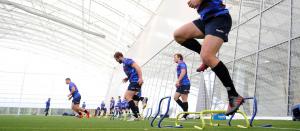Learning Center Information
- LEARNING CENTER_POSTED_BY: Lisa Micheal
- LEARNING CENTER_POSTED_ON: Jan 13, 2019
- Views : 2347
- Category : Nutrition
-
Description :
Specific guidelines that aim to facilitate the recovery of soccer players from the demands of training and a congested fixture schedule are lacking; especially in relation to evidence-based nutritional recommendations. The importance of repeated high level performance and injury avoidance while addressing the challenges of fixture scheduling, travel to away venues, and training commitments requires a strategic and practically feasible method of implementing specific nutritional strategies. Here we present evidence-based guidelines regarding nutritional recovery strategies within the context of soccer. An emphasis is placed on providing practically applicable guidelines for facilitation of recovery when multiple matches are played within a short period of time (i.e. 48 h). Following match-play, the restoration of liver and muscle glycogen stores (via consumption of ~1.2 g⋅kg−1⋅h−1 of carbohydrate) and augmentation of protein synthesis (via ~40 g of protein) should be prioritised in the first 20 min of recovery. Daily intakes of 6–10 g⋅kg−1 body mass of carbohydrate are recommended when limited time separates repeated matches while daily protein intakes of >1.5 g⋅kg−1 body mass should be targeted; possibly in the form of multiple smaller feedings (e.g., 6 × 20–40 g). At least 150% of the body mass lost during exercise should be consumed within 1 h and electrolytes added such that fluid losses are ameliorated. Strategic use of protein, leucine, creatine, polyphenols and omega-3 supplements could also offer practical means of enhancing post-match recovery.
- Location : Nelson Mandela Bay Stadium, Port Elizabeth, South Africa
- Phone : 041 871 4433
- Website : www.test.com
Overview
- Over the course of a 45 week season, professional soccer teams may play in excess of 60 competitive matches [1, 2] and thus at specific times of the year, multiple matches will be played within a single week [1]. Notwithstanding the additional match demands of the pre-season period, it is common for players to compete in 2–3 matches within an 8 day period (see Fig. 1 for a typical weekly schedule for an English Premier League team) on multiple occasions throughout the season. It should be noted that the notion of limited recovery between soccer matches is not unique to the English Premier League as fixture congestion is also common among U.S. University teams as well as youth teams who play multiple games in a weekend. Up to 120 h are required to restore disturbances in metabolic and physical performance indices that result from soccer match-play [3]. Injury risk has been observed to increase when less than 96 h separates games [1, 2] and the reduced recovery time between matches played in FIFA World Cup competitions is perceived to be a primary cause of injury in professional soccer players [4]. Therefore, the ability to facilitate post-match recovery is desirable.
